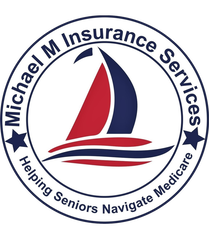Enrolling in Medicare is a significant milestone for seniors and eligible individuals, but the process can feel daunting with its deadlines, options, and potential penalties. At My Medicare Mike, we’re here to guide you through Medicare enrollment with clarity and confidence. Whether you’re approaching 65 or exploring options due to a disability, these practical tips will help you make informed decisions and avoid common pitfalls. Let’s dive into the essentials of navigating Medicare enrollment successfully.
Understand Your Eligibility
Medicare is primarily for individuals aged 65 or older who are U.S. citizens or legal residents with at least five years of residency. You may also qualify if you’re under 65 with certain disabilities, End-Stage Renal Disease (ESRD), or ALS. If you’re already receiving Social Security benefits, you’ll be automatically enrolled in Medicare Parts A and B at 65. Otherwise, you’ll need to sign up manually. Not sure if you qualify? Visit our About Us page for more details or check our FAQ: Who is eligible for Medicare?.
Know Your Enrollment Periods
Timing is critical when enrolling in Medicare to avoid lifelong penalties. Here are the key enrollment periods:
Initial Enrollment Period (IEP): This seven-month window starts three months before your 65th birthday month and ends three months after. Enroll in Parts A and B during this period to avoid late penalties. For step-by-step guidance, see our FAQ: How do I sign up for Medicare?.
Special Enrollment Period (SEP): If you’re still working and covered by an employer’s group health plan, you can delay Parts A and B enrollment and sign up later without penalties during an SEP. This typically begins when your employment or coverage ends.
General Enrollment Period (GEP): If you miss your IEP, you can sign up between January 1 and March 31 each year, but you may face penalties, especially for Part B.
Open Enrollment Period (OEP): From October 15 to December 7, you can join or switch Medicare Advantage (Part C) or Part D plans.
Missing deadlines can increase premiums, so plan ahead. Our Services page offers tools to track these periods.
Evaluate Your Coverage Options
Medicare offers multiple paths, and choosing the right one depends on your health needs and budget. Here’s a breakdown:
Original Medicare (Parts A and B): Part A covers hospital stays, while Part B handles outpatient care. It offers flexibility to see any Medicare-accepting provider but leaves gaps like copayments. Consider adding a Medigap plan to cover these costs. Learn more in our FAQ: What is Medigap, and do I need it?.
Medicare Advantage (Part C): These private plans bundle Parts A, B, and often Part D, with extras like dental or vision. However, they may limit you to a provider network. Check our Blog for comparisons between Original Medicare and Medicare Advantage.
Part D (Prescription Drug Plans): If you choose Original Medicare, a standalone Part D plan is essential for medication coverage. Enroll during your IEP to avoid penalties.
Before deciding, assess your healthcare needs, preferred doctors, and budget. Our FAQ: Is Medicare Advantage right for me? can help you weigh your options.
Avoid Common Enrollment Mistakes
Seniors often make avoidable errors during enrollment. Here’s how to steer clear:
Don’t Delay Part B Enrollment: If you don’t have credible employer coverage, sign up for Part B during your IEP. Late enrollment triggers a 10% premium penalty for each year you were eligible but didn’t enroll.
Research Part D Plans: Compare Part D plans annually, as formularies and costs change. Missing initial Part D enrollment can lead to a penalty of 1% of the national base premium per month delayed.
Understand Medigap Timing: You have a six-month Medigap Open Enrollment Period starting the month you turn 65 and enroll in Part B. During this time, insurers can’t deny coverage or charge more for pre-existing conditions.
Leverage Resources and Support
Navigating Medicare doesn’t have to be a solo journey. Use these resources:
Official Medicare Website: Visit Medicare.gov to compare plans and check provider networks.
State Health Insurance Assistance Program (SHIP): SHIP offers free, unbiased counseling. Find your local program through Medicare.gov.
My Medicare Mike: Our Contact Us page connects you with experts for personalized advice. We also provide plan comparison tools on our Services page.
Plan for Costs
Medicare isn’t free. Expect premiums (Part B and D), deductibles, and copayments. In 2025, the standard Part B premium is projected to be around $185.00 monthly, with income-based adjustments. Low-income seniors may qualify for programs like Extra Help for Part D. Our FAQ: How can I reduce Medicare costs? outlines eligibility for these programs.
Enrolling in Medicare with confidence starts with understanding your eligibility, timing, and options. By researching plans, avoiding penalties, and leveraging resources like My Medicare Mike, you can secure coverage that fits your lifestyle. Have questions? Reach out via our Contact Us page or explore our FAQs for answers. With the right preparation, you’ll navigate Medicare enrollment smoothly and focus on what matters most—your health.

